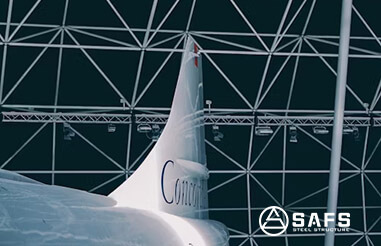Bolted space truss structures offer significant advantages in modern construction and engineering. Here are their key characteristics:
- Lightweight and High Strength: Constructed from high-strength steel, bolted space trusses are capable of bearing heavy loads while remaining relatively lightweight. This allows for large spans in building designs, reducing overall weight and cutting construction costs.
- High Manufacturing Precision: Bolted space trusses are typically prefabricated in factories with computer-aided design and precise machining, ensuring accuracy in every joint and component. This precision not only facilitates construction and assembly but also enhances overall building quality and safety.
- Rapid Construction and Installation: Designed for quick assembly on-site, prefabricated components and joints can be easily transported and swiftly assembled. This efficiency not only saves construction time but also reduces labor and resource consumption during the process.
- Strong Adaptability: Bolted space trusses offer flexibility to accommodate various architectural and design requirements. They can address complex structural demands such as large spans or irregular configurations, providing architects and engineers with greater design freedom.
- Environmentally Friendly and Sustainable: By minimizing material waste and energy consumption during manufacturing and installation, bolted space trusses contribute positively to sustainable development and environmental conservation. Their potential for reuse or dismantling further supports sustainability goals.

In summary, bolted space trusses play a crucial role in supporting large-scale construction projects, offering unique design advantages that make them indispensable in modern architecture and engineering.
